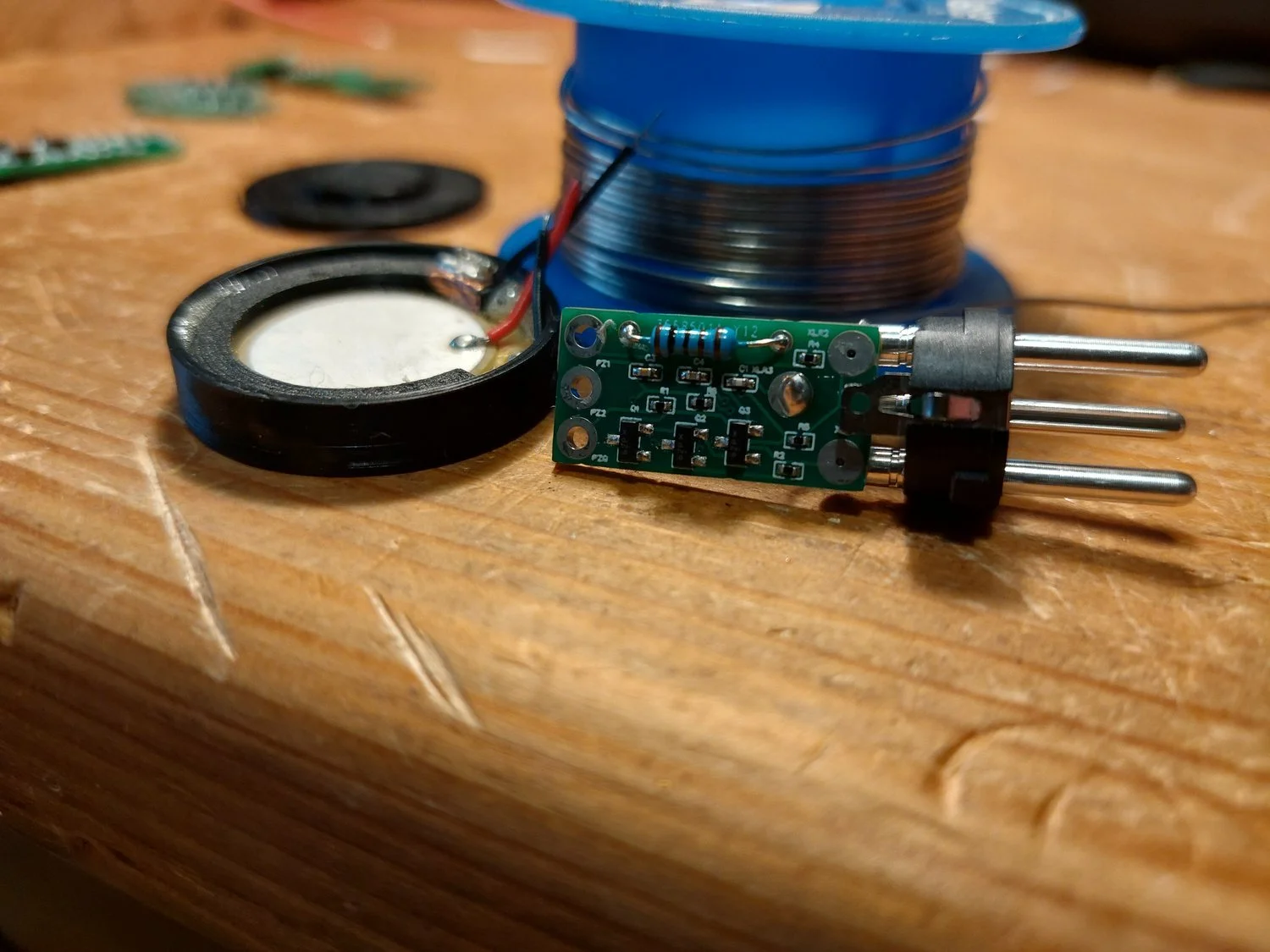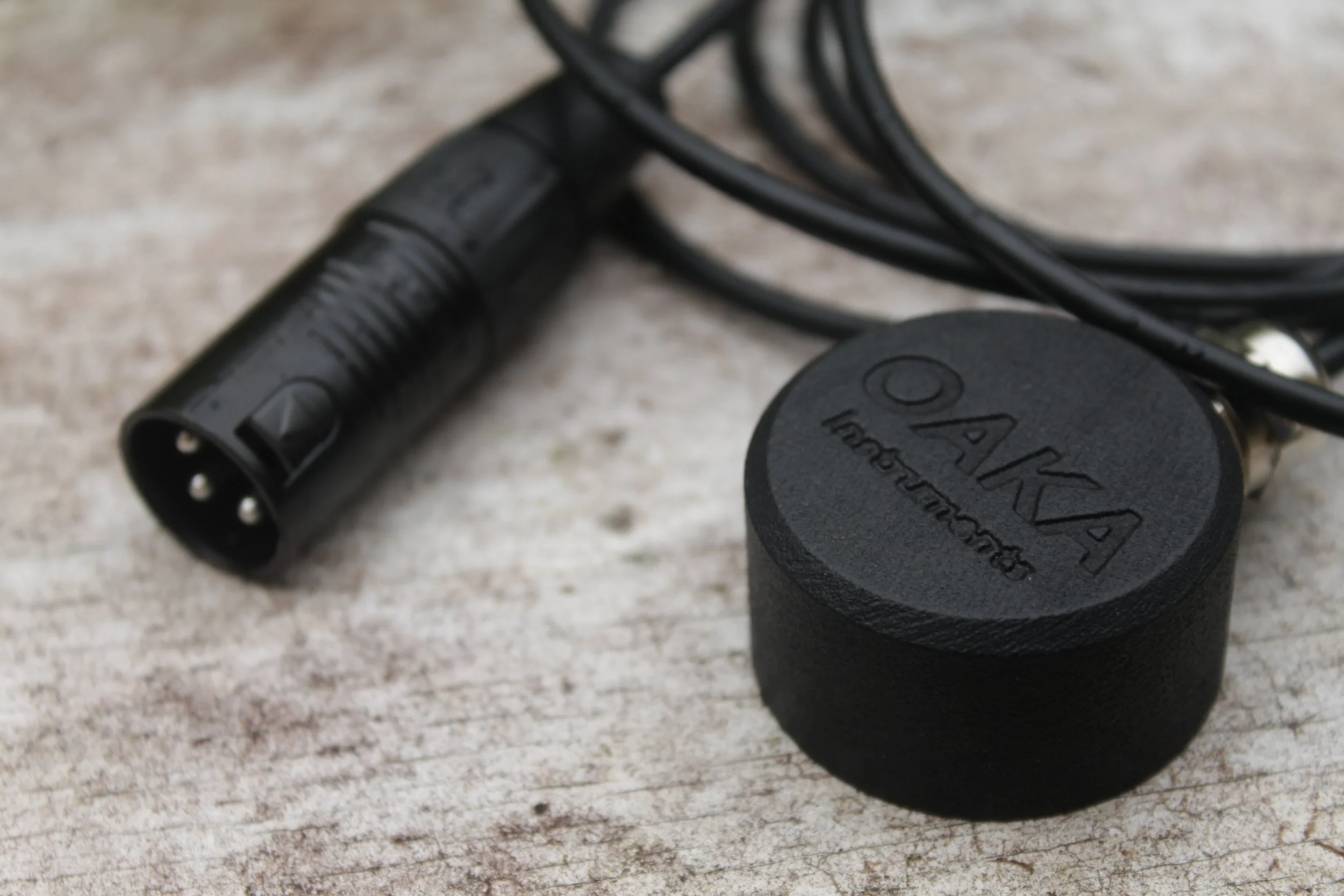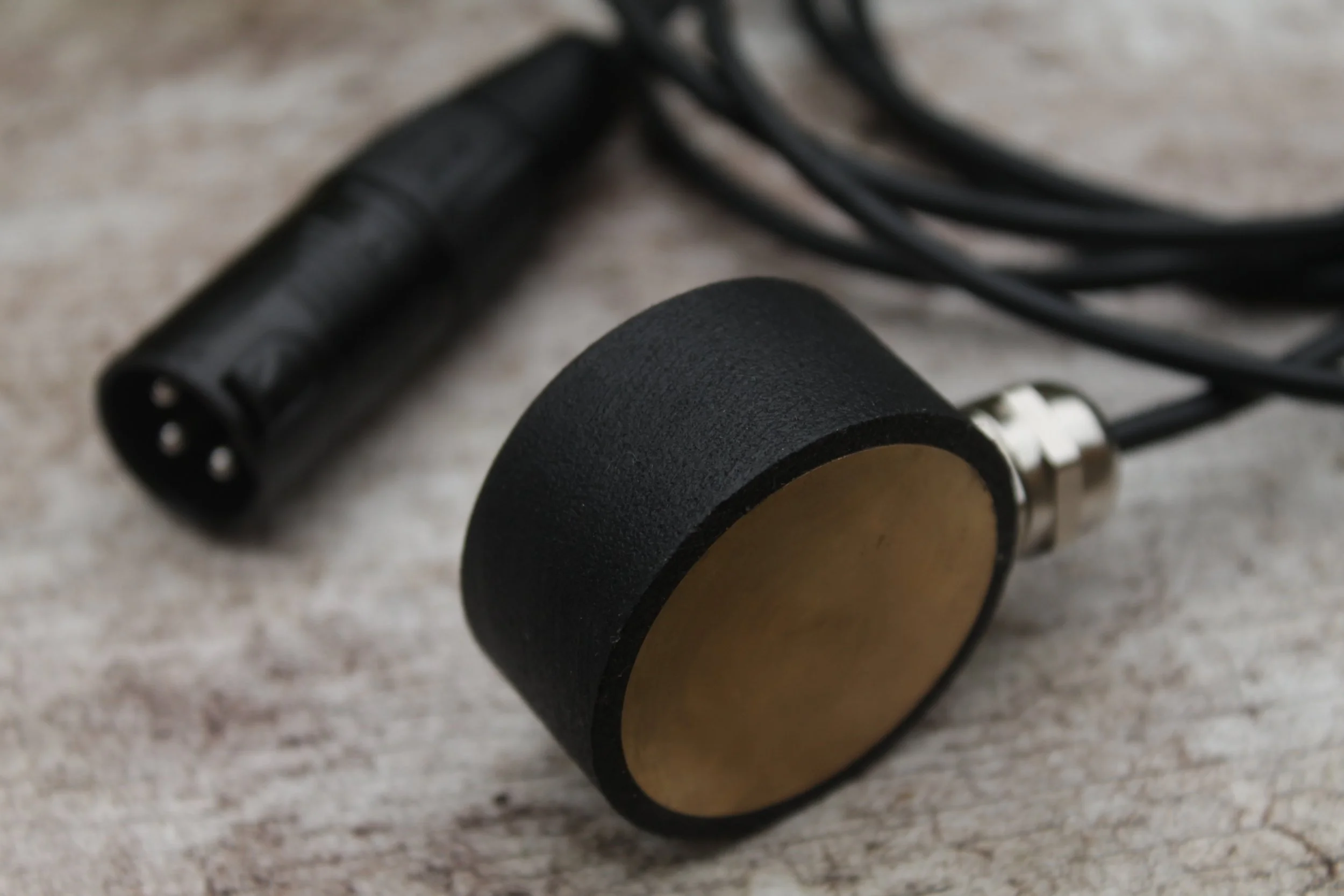Designing and building an active contact microphone for field recording and sound design
This blog post explains the deisgn and creation of Tellus, an active contact microphone. You can purchase the microphone here.
I’ve been experimenting and building active contact microphones for a while now and have playing with a variety of different approaches. Recently, after using the microphones substantially in the field, I have settled on a design which I am happy with.
I thought it would be a good idea to talk about the design and build of the active contact microphone. Its no secret that I have used a modified version of the Alex Rice Piezo Preamplifier and following his notice in the original PCB files he asked to be credited according to the Creative Commons Share-Alike 3.0 license.
I’m not going to go into pre amplifier design much here as Zac Poff has done a fantastic job gathering Alex’s notes on the design on the link I shared above. I encourage anyone who has basic electronics knowledge to give it a go. I learnt loads from it. As I said before, after lots of testing and not actually being 100% happy with the original design I changed it considerably to my own taste and adapted it to be used for sensitive recording, useful for field recording and sound design. I completely re-designed the board and made it tiny with SMT components to fit inside an XLR plug.
An early Tellus prototype
The first versions of the microphone I was using a 3d printed case and a plastic dipped protective layer. I found this worked well at keeping the microphones durable, however, after experimenting with other materials I was finding that increased sensitivity was possible by not covering up the brass element.
Version one of Tellus, with a plastic coated element
I was also finding that the process of dipping the microphones was very time consuming and a lot of the time, the results were visually quite bad. So I went back to the drawing board……
A prototype of Tellus V2, using old bicycle inner tube to attach
In the latest design, I have created a version using a brass element, I have found that using a metal element is a massive improvement than using plastic. Subtle high frequency response is greatly increased and its possible to hear insects and bugs moving in the soil. I have also now put the circuitry inside the microphone body, decreasing interference. I have also made the cable thicker and more durable. The case is now larger and made out of a high quality and highly durable plastic.
Tellus Version Two - Active Contact Microphone
Tellus Version Two - Active Contact Microphone Brass Element
The final design I think is a huge improvement. Its taken a while to get there but the result is a really durable and solid tool. I have been using the microphone for my own work and the results are amazing. If you would like to hear some sound clips check them out below:





